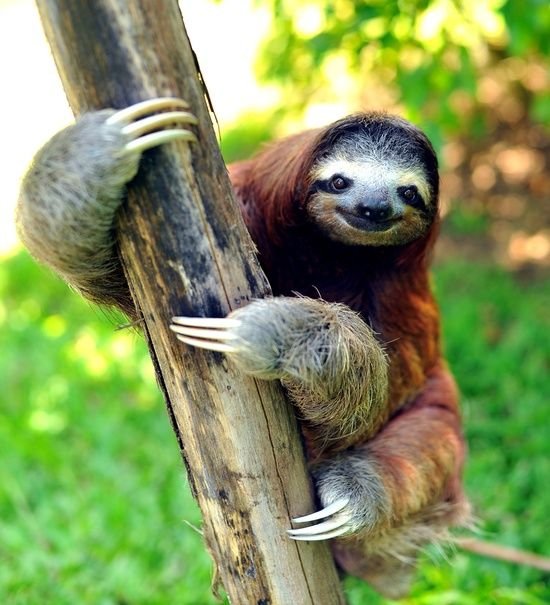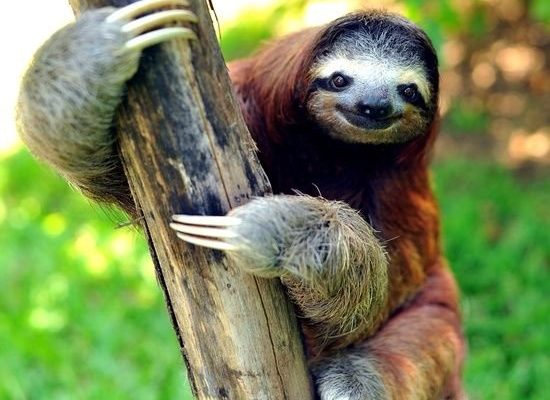
These three-toed wonders aren’t just for cute memes; they’re a marvel of evolution in their own right. From their peculiar sleeping habits to the oddities of their metabolism, each fact we explore will give you a glimpse into the extraordinary world of these slow-paced mammals. So, grab your favorite drink, get comfy, and let’s uncover ten fascinating facts about the three-toed sloth.
1. The Three-Toed Sloth: A Unique Species
You might be wondering what makes the three-toed sloth so special. Well, first off, they’re not actually that slothful in the sense of being lazy. Instead, they have a unique lifestyle that’s perfectly adapted to their environment. These critters belong to the family Bradypodidae and are found mainly in Central and South America.
The three-toed sloth has three long, curved claws on each limb, which help them hang effortlessly from trees. Interestingly, they’re not entirely alone in the sloth family; there are also two-toed sloths. The main difference? You guessed it—two claws versus three! It’s kind of like the difference between a casual coffee shop and a fancy café: both serve coffee, but each has its own vibe.
2. Speed Isn’t Their Game
Honestly, if you expect to see a three-toed sloth sprinting through the trees, you’ll be sorely disappointed. These animals typically move at a snail’s pace of about 0.24 kilometers per hour (or roughly 0.15 miles per hour). That’s like watching paint dry! The sloth’s slow metabolism helps it conserve energy, since their diet consists mainly of leaves, which are low in nutrients.
Here’s the thing: while they’re slow on land, three-toed sloths are surprisingly adept swimmers. They can paddle through the water three times faster than they can move on the ground! If you ever get the chance to see one swim, it’s pretty incredible. It’s like watching a furry little torpedo navigate its way through the water.
3. An Unusual Diet
What do three-toed sloths eat? You might be curious if they munch on your typical animal fare. Surprisingly, their diet consists primarily of leaves, fruits, and flowers. They have a highly specialized digestive system that carries out the slow process of breaking down tough plant material. In fact, it can take days to digest a single meal.
One fascinating aspect of their diet is the unique bacteria in their stomachs. This bacteria helps them break down cellulose, which is found in the plant cell walls. The sloth’s slow digestion means they can extract the maximum nutrients possible, even from low-quality food. You could say they’re nature’s recycling machines, turning what many other animals would consider unappetizing into valuable energy.
4. A Sleepy Lifestyle
If you love a good nap, you might just relate to the three-toed sloth. These creatures spend about 15 to 20 hours a day sleeping! They find cozy spots in the canopies of trees and hang upside down while watching the world go by. It’s like having a permanent vacation in a hammock, just without the cocktails.
But it’s not just about catching Z’s. Sleeping in this way also serves as a survival tactic. Being upside down allows them to camouflage better among the green leaves and branches, keeping them hidden from hungry predators. Can you imagine the joy of lounging around all day, feeling secure in a leafy fortress?
5. Unique Fur and Friendships
Did you know that sloth fur is home to a diverse ecosystem? It’s true! Their fur grows in a way that encourages algae to thrive on its surface, giving them a greenish tint. This isn’t just for looks; the algae provide extra camouflage, helping sloths blend in with their forest surroundings.
But that’s not all. The sloth’s fur also attracts various insects, and while this might sound unappealing, it creates a unique relationship. Some insects are beneficial and help keep the fur clean, while others might not be as friendly. It’s a wild world out there, and sloths live right in the middle of it, forming their own little communities of critters.
6. The Sloth’s Heartbeat
Let me explain something unique about the three-toed sloth: their heart rate is unusually low. It usually beats around 40 to 50 beats per minute, much slower than most mammals. This laid-back rhythm helps them conserve energy, which is crucial considering their slow lifestyle and nutrient-poor diet.
You might be surprised to learn that when excited, like during a brief sprint from danger, a sloth’s heartbeat can increase significantly, up to 90 beats per minute. It’s like flipping a switch from chill mode to high alert in an instant!
7. Reproduction and Motherhood
When it comes to love, three-toed sloths have their own way of doing things. They typically mate during the rainy season, and after a gestation period of about six months, a mother sloth gives birth to a single offspring. This baby sloth clings to its mother’s belly for about a month, learning to navigate their treetop homes and bond through gentle grooming.
Mother sloths are quite dedicated caregivers. They will even share their diet with their young ones, teaching them how to forage for leaves. It’s a heartwarming sight to see a tiny sloth curled up next to its mother, learning the ropes of sloth life.
8. Conservation Status
Unfortunately, three-toed sloths are facing challenges in the wild. Habitat loss due to deforestation and climate change has put these adorable creatures at risk. Their exclusive reliance on trees means that as forests shrink, so does their chance of survival.
Several organizations are working hard to protect their habitats and raise awareness about the plight of sloths. If you ever visit a wildlife sanctuary or zoo, take a moment to appreciate these creatures and consider supporting efforts to save their natural homes. Every little bit counts!
9. Sloths and Their Role in the Ecosystem
Three-toed sloths play a critical role in their ecosystems, acting as both herbivores and hosts for various species. By munching on leaves, they help to shape the forest environment. Their slow movement allows plants and other animals to thrive in the canopy, creating a diverse ecosystem.
Additionally, their fur’s algae not only provides camouflage but also contributes to the nutrient cycle as it falls to the forest floor when sloths shed their fur. So, when you think about it, sloths aren’t just cute; they’re vital to the health of their habitats.
10. Why We Love Sloths
You might be wondering why sloths capture our hearts so easily. It’s not just their funny faces and slow-motion antics. Sloths represent a different way of being in the world that many of us can learn from. In a fast-paced society, their relaxed lifestyle invites us to slow down, appreciate the moment, and savor life’s simple pleasures.
Watching a sloth go about its day can be oddly soothing. It reminds us that sometimes, it’s okay to take a step back, breathe, and just hang out—literally! Whether it’s through movies, internet memes, or wildlife documentaries, sloths continue to bring joy and wonder into our lives.
As we wrap up our exploration of the three-toed sloth, it’s clear that these creatures are far more than just cute faces. From their slow lifestyles to their vital roles in the ecosystem, there’s a lot to love and learn from them. So, next time you come across a sloth in your feed or on a nature show, remember the fascinating facts we discussed and appreciate these remarkable animals even more.

